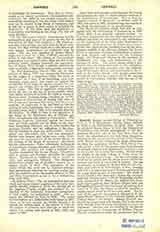

Conwell, HENRY, second Bishop of Philadelphia, U.S.A., b. at Moneymore, County Derry, Ireland, in 1745; d. at Philadelphia, April 22, 1842. After the death of Bishop Egan, in 1814, the Bishopric of Philadelphia was offered successively to the Rev. Ambrose Marechal and to the Very Rev. Louis de Barth, the administrator, but both these clergymen, deterred by the contumacious attitude of the trustees of St. Mary’s church, returned the Bulls; whereupon the Holy See appointed (November 26, 1819) Henry conwell, parish priest of Dungannon and Vicar-General of Armagh, Ireland, who imprudently accepted a task too heavy for his seventy four years. He had made his studies in the Irish College at Paris, where his family had founded a burse. He was universally beloved by his people and the clergy, and an ineffectual attempt was made to retain him in Ireland. He was consecrated in London by Bishop Poynter, August 24, 1820, and arrived in Philadelphia, December 2, bringing with him a young priest named Keenan, subsequently for many years pastor at Lancaster. The seeds of future troubles had been sown during the vacancy, when the administrator, without demanding credentials, stationed at St. Mary’s the brilliant but demagogic and unpriestly Rev. William Hogan, who had so ingratiated himself with the board of trustees that when, on December 12, the bishop revoked his faculties, a schism ensued which lasted for many years. For details of the quarrel, the reader is referred to J. Gilmary Shea’s “History of the Catholic Church in the United States” (see below). Bishop Conwell conducted the controversy with dignity, but in the course of it, through desire of peace, committed two errors of judgment. The first was the recalling to the diocese and appointing as vicar-general of William Vincent Harold, a Dominican whom his predecessor had dismissed. Contrary to the bishop’s expectation, the return of Harold complicated the situation. It was a more serious mistake that on October 9, 1826, he capitulated to the trustees, yielding to them the right of determining salaries and of vetoing his appointments. Highly displeased at this surrender of episcopal rights, the Holy See appointed an administrator and summoned the bishop to Rome. His explanations were pronounced unsatisfactory and he was forbidden to return to his see. He did return to Philadelphia and received permission to perform episcopal functions, without interfering in matters of administration. In 1830 Francis Patrick Kenrick arrived as coadjutor and administrator, and Bishop Conwell spent his remaining years in seclusion and prayer.
JAMES F. LOUGHLIN

